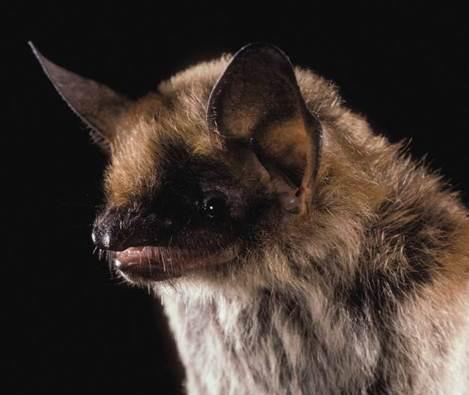Lately, I’ve been thinking about bats. A few dozen have been flying around our Waldport, Oregon, Cyprus tree: California Myotis, Fringed Myotis, and the Big Brown Bat. Near White Salmon, WA, I have seen dozens of Silver-Haired Bats, flying low to the ground on 20 acres we own.

This creature accounts for almost a third of all mammal species (more than 1,400). Bats are both talisman and a bright memory in these dark times.
Recall: Bats and the SARS-CoV2 used to be the talk of the town, beginning March 2020. More than 90 coronas have been found in bats. (The origins of SARS-CoV2 is even speculated recently by writer and thinker, Jeffrey Sachs as a lab origin virus.)
Background: I was in Vietnam years ago to help survey forest and jungle.
However, I’ve had bats in my life since age six months. In the Azores, there is one native bat. My sister and I lived with parents who worked at the Air Force base. We were on the island for five years.
Bats roosted in the rafters of the garage where my father stored our 1957 Chevy.
I watched bats at dusk from my bedroom window.
Memoires listed: earthquakes, fish, amazing bread, melodic Portuguese language, mold, and bats.
Our nanny had a bent-over fisherman uncle who let us play on his potato farm. In the evening, with the rice, tuna, warm bread and big glasses of Sangria for the adults and blood-red grape juice for the kids, we’d sit outside and watch a thousand bats echolocate above the forest.
One day Gloria’s tio showed us a big green glass jar with a tin lid.
I saw a creature flapping around. He showed me my first bat up close. I was three. I learned later, when I really got into bats, that species — Azores noctule (Nyctalus azoreum), the only endemic mammal on the island.
Another bat lives on the islands — the greater mouse-eared bat (Myotis myotis) – but this species is not native, first arriving as a stowaway on cargo ships.

For more than six decades, I’ve been fascinated with this species, Chiroptera, which means “hand-wing.” Imagine the bones in a bat’s wing working like those of the human arm and hand, but bat finger bones are super elongated and connected by a double membrane of skin to form “the wing.”

In the 1990s, I lived in bat caves with British and Vietnamese scientists working on biological surveys, called transects.
We climbed limestone mountains, looking for caves. We worked near Laos.
The 23-year-old Scotsman who led the bat survey was dubbed “wild man.” I was 36 years old, and the rest of the team was much younger.
Except for Hanoi biologist, Dr. Viet (37).
I was in Vietnam the same age my cryptographer father was there as a Big Red One CW4. He was shot when the helicopter he was in came under fire. The pilot took one between the eyes. My old man’s bullet ended up two inches from his heart.
He never liked talking about Vietnam. By the time I made it to Vietnam, he had been buried, the victim of a heart attack.

I know he would have been blown away that his son was traveling in Vietnam with scientists. He listened to my stories of scuba diving in Mexico, Baja and Central America with a kind of awe.
He liked my yarns.

I ended up in places in Vietnam he never explored. I hiked, rode in buses and boats, and then did the entire length of the country on a motorcycle. Dr. Viet was a guide for me, navigating me through the hundred plus Vietnamese words I knew.
Today, I am wrestling with fundamental questions as a writer and teacher. Working with words, concepts, spirituality, philosophy and aging, I know why people are seeking solitude and a reimagining of where they are going the rest of their lives.
Bats also bring me to philosophical reflection. I just finished a 1974 essay, “What Is It Like to Be a Bat?” by Thomas Nagel. He’s looking at perception, and how as a species, sight-abled humans have a lack of words and mental constructs getting a blind person to understand the color red.
The same goes for scientists attempting to know what it is “to be” and “to experience” like a bat.
If you have been with bats in caves like I have, you know they are alien forms.
Nagel: “But bat sonar, though clearly a form of perception, is not similar in its operation to any sense that we possess, and there is no reason to suppose that it is subjectively like anything we can experience or imagine. This appears to create difficulties for the notion of what it is like to be a bat.”
The same could be said about people. How impossible it is for me to know what it is to be a woman and to experience pregnancy and childbirth. Conscious experience is “a widespread phenomenon.”
Here I am, in a time of corona, lockdowns, mandates, vaccinations, thinking about bats. And the conscious experience. Yet I can’t really be in the bat’s world, or experience it. We can’t know what it’s like to be a 1,000 year old bristlecone pine. Or to be a European bee in a hive.
I’m reminding myself daily to follow this admonition: “Before I judge a man, I need to walk a mile in his shoes.” Or, before calling a bat “vermin,” people need to image what it’s like to fly using sonar flapping with hand-wings.

+–+
Aside Note: Oct. 24-31 is Bat Week, an annual, international celebration of the role of bats in nature! If your thing isn’t bats, many groups and organizations also recognize these for the month: Adopt A Shelter Dog; Antidepressant Death; Breast Cancer Awareness; Celebrating The Bilingual Child; Down Syndrome; Dyslexia; Eat Better, Eat Together; Emotional Intelligence; Global Diversity; Head Start Awareness; Health Literacy; Long-Term Care Planning!
+–+
In Oregon, there are 15 bat species, and eight of those are Oregon Conservation Strategy Species. Strategy Species are those having small or declining populations, are at-risk, and/or of management concern.
In sister state south, California, count that as 25 species of bats. Additionally, there are 45 species of bats in the United States and Canada. Of those California Dreaming animals, bats 24 of these are in Southern California, which has the largest and smallest known bats found in the United States.
Bats can can eat their weight in insects nightly. They are incredible pollinators. No, the cheetah isn’t the fastest mammal. The Brazilian free-tailed bat can reach speeds up to 100 mph, making it by far the fastest mammal on Earth.
That flying fox (genus Pteropus) also called a fox bat, includes about 65 species mostly found on tropical islands from Madagascar to Australia and Indonesia and in mainland Asia. Most species are primarily nocturnal. Flying foxes are the largest bats, some attaining a wingspan of 1.5 metres (5 feet) with a head and body length of about 40 cm (16 inches).
I was under a papaya tree in Vietnam. It was dusk. I was in shorts and barefooted. I had just come down from an alpine forest area with our crew. Lots of cobras on the path heading back to camp. I had a huge bowl of super strong tea, sipping it while listening to the forest churn out amazing nighttime symphonies.
Civets, amphibians, gibbons, odd barking from the deer endemic to Vietnam. Insects. And the guys and gals around a smokey fire talking, and some zither music from a radio. I was the snake guy, and assisted with the bat studies. I had just caught a green viper and photographed it twenty different ways. The Vietnamese scientists wondered what sort of wild man I was as I jumped up and down limbs to wrestle these snakes, towel wrapped around wrist, another around my neck, ready to pin head down with my special short stick.
It was a long half a year, with lots of rain, mud, many river crossings (I was also one of the logistics guys, taking one of our three motorcycles into 26 river crossings to a village 10 miles down the mountain for tuna, cigs, beer and ramen, eggs, rice).
The tree seemed pretty shadowy, and when I leaned into it, as I was looking up for stars or a moon, there, those leaves just started trembling, and, poof, about 40 fruit bats lifted up, like something out of Hollywood, to make it simple. All over the space above my head. Scattered like frenzied folks.
One of those hundred moments in my life where my young verbiage, kick ass and bitchin’, came back calling.

I’ve written a lot about Vietnam, about the work, the ideas, about wounds of my father and friends and countrymen seemingly huge, but compared to the Vietnamese suffering, our are scratches. Trauma. Homeless veterans. Science and biology. Ecology. Travel. Photography. Deep trawling of people in Vietnam. Friendships. And, a short story collection, Wide Open Eyes: Surfacing from Vietnam.
Here, Part 1, “Bat Caves and Vietnam – More than Just a War Log”
& Part 2, “Deep Country, Bats, the Riot of Life in Viet Nam’s Cities”
I want you to guard against those who demand that you die just to prove something. It is not that I advise you to respect your life more than anything else, but not to die uselessly for the need of others… for you still have many years ahead of you. Many years of joy and happiness to experience. Who else but you can experience your life?
? Bao Ninh, author of Sorrow of War
It’s a different world, now, and it was different leading up to the pre-Planned Pandemic, pre-Trump/Biden Lunacy, pre-cancelling everything contrary to dead-end narrative, pre-end of real journalism. Now, I find few who want to know about other people, about lives lived, about philosophies gained through reading, schooling, schools of hard knocks, and people hate nuance, and forget about engaging them in deep discussion about animals, really, species like bats, man, scary in the minds of clueless folk.
Things have changed since the infection of Reagan, Bush, Clinton, Bush, Obama, Trump and Biden . . . . The United $tates of America is the Empire of Lies, Empire of Chaos, Empire of Murder, hands down, and we don’t need Pepe Escobar or John Pilger or others to tell us that. But the seed of this evil runs deep infecting everyday conversation.
I was with a guy who is helping me on house construction, and he has true Trump Derangement Syndrome, and alas, talking about DeSantis in derogatory ways, I told him I have Zero love of Pelosi or Desantis, et al. I let him know that I am hard left socialist, and definitely leaning toward communism. Ukraine, and, no, Biden is not a great guy or president. I told him that both parties are equally corrupt, and alas, this is a country of casino, predatory, shock doctrine, disaster, parasitic capitalism, with a big “C” for corrupt-criminal, abided by and promoted by both Republicans and Democrats. He told me that if I am communist, and love that so much, then I should move to Russia. Wow.
There’s a 69 year old Democrat for you.
And again, in rural, Pacific beach Oregon, few want to know about anything other than their little world of self-imposed trauma, confirmation bias, and the black-white world of triple downing on the dumb-down Kool Aid mix.
Obama Derangement Syndrome and Trump Derangement Syndrome. Whew.

I’m thinking about Rogue State, Blum’s work, and how the U$A deems what or who is human, and now, in this up is down, war is peace, lies are truth world of the Mainstream Presstitutes, the lockstep of journalism almost everywhere never digging, or looking astray, and the deplatforming, gaslighting and criminalization of independent thinking. Sort of determining who shall live, and who shall be exterminated.
The protagonist-narrator of Viet Thanh Nguyen’s 2015 novel The Sympathizer has a thing for squid. (Think less calamari, more American Pie.) The bastard son of a Vietnamese maid and a French priest, he discovers at the age of thirteen that he has a peculiar fetish for masturbating into gutted squid, lovingly—albeit unwittingly—prepared by his mother for the night’s meal. Unfortunately for him, squid are in short supply in working-class Saigon in the late nineteen-fifties, and so he is forced to wash the abused squid and return them to the kitchen to cover up his crime. Sitting down to dinner with his mother late one night, he tucks into one of those very same squid, stuffed and served with a side of ginger-lime sauce. “Some will undoubtedly find this episode obscene,” he concedes. “Not I!” he declares. “Massacre is obscene. Torture is obscene. Three million dead is obscene. Masturbation, even with an admittedly nonconsensual squid? Not so much.” He should know. By the time he is narrating the novel, he has lived through the Vietnam War as an undercover communist agent in South Vietnam, has sought asylum in America, and is now living as a refugee-cum-spy in Los Angeles.
The Sympathizer was published in 2015—three years after Kill Anything that Moves—but it could just as easily have been written as a prompt for historian turned investigative journalist Nick Turse. Indeed, Turse’s central aim in Kill Anything that Moves is to expose the unparalleled obscenity of the Vietnam War: unparalleled both in terms of the devastating scale and variety of harm done and the diabolical levels of premeditation on the part of the U.S. military. Historians of the Vietnam War, as much as the American public, have traditionally remembered the massacre at M? Lai—in which upwards of five hundred unarmed Vietnamese civilians were hacked, mowed down, and violated by the American military—as an outlier in an otherwise largely acceptable war (at least in terms of American actions). But as Vietnam veteran and whistleblower Ron Ridenhour explains, and Turse quotes approvingly, M? Lai “was an operation, not an aberration.” (source)

Bats as vermin, pests. Entire bat roosts murdered with one dynamite stick thrown into a cave. Double and triple taps. Splats. Bats emblematic of peoples the U$A deems as vermin, less than. Many of those splats are in the Global South, BIPOC!
Bioindicators. Bats. Truly:
The earth is now subject to climate change and habitat deterioration on unprecedented scales. Monitoring climate change and habitat loss alone is insufficient if we are to understand the effects of these factors on complex biological communities. It is therefore important to identify bioindicator taxa that show measurable responses to climate change and habitat loss and that reflect wider-scale impacts on the biota of interest. We argue that bats have enormous potential as bioindicators: they show taxonomic stability, trends in their populations can be monitored, short- and longterm effects on populations can be measured and they are distributed widely around the globe. Because insectivorous bats occupy high trophic levels, they are sensitive to accumulations of pesticides and other toxins, and changes in their abundance may reflect changes in populations of arthropod prey species. Bats provide several ecosystem services, and hence reflect the status of the plant populations on which they feed and pollinate as well as the productivity of insect communities. Bat populations are affected by a wide range of stressors that affect many other taxa. In particular, changes in bat numbers or activity can be related to climate change (including extremes of drought, heat, cold and precipitation, cyclones and sea level rise), deterioration of water quality, agricultural intensification, loss and fragmentation of forests, fatalities at wind turbines, disease, pesticide use and overhunting. There is an urgent need to implement a global network for monitoring bat populations so their role as bioindicators can be used to its full potential. (source)
And yet, most people are not batty about bats. Most people have their preconceptions, their biases, their outright misinformation about bats, and all those prejudices about bats vis-a-vis Hollydirt, Hollywood, sorry, and literature, and myth.

Truly, we, the common socialists, the ones pushing for community-directed governance, who know k12 needs to be facilitated in the out of doors, with hands on earth, and deep learning with languages, music, poetry, biology/ecology, we are the solutions. All things can be solved with clean food, water, true art, loving hearth and home, and deep thinking. With intergenerational cohesion. I am just a guy who has studied agrarian-centered cultures, who has traveled far and wide, and who was immersed in six languages other than my primary language, English. Immersed in dozens of different cultures and perspectives. But we common socialists, us International Workers of World wobbly types, we are the bats, the indicator species, the splat. Not worthy of life.

Debs, another leading person, who is considered splat, collateral damage. (source)
Expendable, sacrificial lambs. Bats.
Yet bats have defined me, as has all those dives around the world. As well as ground truthing in Guatemala or working as a newspaperman in Bisbee. All those thousands of college students I have worked with over five states. The work in prisons. A thousand published pieces, from newspapers, to magazines, journals, essay collections, and more. My radio show: Tipping Points: Voices from the Edge.
And more, but I want to think like a bat, be a bat just for one night along the Laos border, skimming the sky for mosquitos, moths and flying walking sticks.
That would be a true transmogrification.












